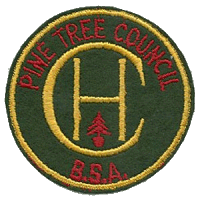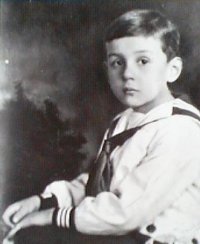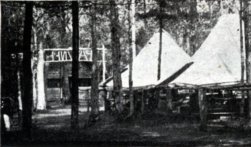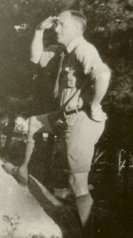Camp William Hinds
146 Plains Road
Raymond, Maine
Camp Hinds sits on 280 acres of land on the shores of Panther Pond,
which is a part of the Sebago Lakes Region of Maine.
The Camp has a 300+ seat Dining Hall, Health Lodge, Recreation Hall,
and Trading Post. Several buildings are used year round for camping, such
as Bates, Cadigan and Tenny Cabins. The Tenny Campsite is the only site
that does not use tents - Permanent lean-tos make up that site.
Hinds is used primarily as a traditional summer camp. When not serving
as a summer camp, various units from the Council can be found utilizing
its many campsites and buildings all through the Fall, Winter and Spring
months. |
 |
|
 William "Billy" Hinds
William "Billy" Hinds
|
By: Frank Maguire
The first permanent summer camp for scouts of the Cumberland County
Council was opened in 1927, on land in Raymond, Maine, purchased with a
gift from Charles Hinds in memory of his young son, William, who had been
killed in a tragic accident.
Under the leadership of Herbert Patrick, the council executive,
the camp first provided a large recreation hall, a health lodge, a dining
hall, a swimming area and several troop campsites named after Indian tribes
featuring eight-man tents. Most Scouts attended for a two-week session
as provisional campers under the supervision of camp provided leadership.
Scouts were instructed by skilled staff members, many of whom were educators
or coaches. |
| As the numbers of campers quickly expanded, the campsites were moved
to wooded areas outside the original center of the camp, and named after
famous men, including Dan Beard, (later Lindbergh, later MacArthur), Daniel
Boone, Richard E. Byrd, Donald MacMillan, Robert E. Peary and John J Pershing.
These campsites all included cabins for the provisional troop leaders; other
such cabins were built for the remaining staff members.
After acquiring the land along the Tenny River a new , much larger,
dining hall was built there and across the river a “senior camp”
with a leader’s cabin, a recreation hall and twelve Adirondack lean-tos
was constructed. The original dining hall became the craft shop, supervised
by Frank W. P. Bailey, one of the founders of the camp. |
 Pawnee Campsite - 1930
Pawnee Campsite - 1930
|
 "Skipper" Patrick
"Skipper" Patrick
|
Expansion continued in the fifties when new campsite construction began
to accommodate the large number of troops coming to camp. First Ridgway,
then Patrick and Baden Powell, West, Siple, and a new Dan Beard were opened.
After the Tenny River bridge was built in 1966, we opened new sites across
the river: Brownsea, Bailey, Siple (relocated) and Maguire.
Program areas have also grown through the years, with the development
of the rifle range, archery range, Cadigan Lodge, expanded scoutcraft areas,
the nature/conservation area in the former Peary campsite, the West Beach
aquatic area and the COPE course.
Provisional camping is still offered in one campsite but today almost
all camping is done by troops which come for one week stays with their
own leaders. |
|
